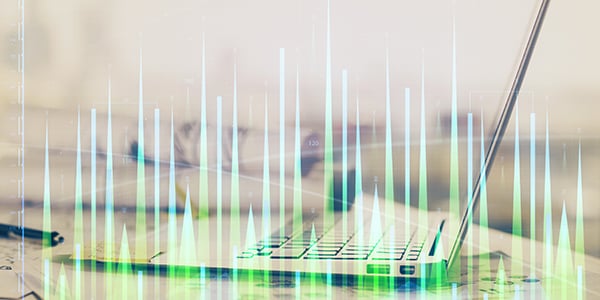When your LLM doesn’t meet your expectations, you can optimize it using retrieval-augmented generation or by fine-tuning it. Find out what's best, when.
What is Retrieval-Augmented Generation?
Retrieval-Augmented Generation (RAG) is a Generative AI (GenAI) framework that enhances Large Language Models (LLMs) by enabling them to access and use up-to-date and trustworthy information from internal knowledge bases and enterprise systems – without the need for retraining. Passive and active retrieval-augmented generation methods improve the relevance and reliability of responses by adding a data retrieval component to the generation process. RAG searches relevant information and queries relevant enterprise data based on the user's prompt, integrates this information into an enhanced prompt, and then invokes the LLM (via its API) to deliver a more accurate and relevant response.
Get the condensed version of the Gartner RAG report.
What is Fine-Tuning?
Fine-tuning is the process of adjusting a pre-trained model to specialize its capabilities for a specific task. Initially, an LLM is trained on an enormous amount of data to learn general language patterns. Fine-tuning involves further training the model on a narrower dataset for a specific domain or application, like healthcare research, customer service, or code generation.
There are 2 types of fine-tuning for LLMs:
-
Domain Adaption
Domain adaptation is the process of training an LLM on a domain-specific dataset – to narrow the gap between the general information the model was trained on, and the more focused data related to the domain. For example, an LLM that’s fine-tuned on legal texts can facilitate tasks like:
Legal entity recognition (advocate, plaintiff, judge, jury)
Relational extraction (the attorney general prosecutes the defendant)
Text mining (decisions, judgements, precedents, rulings)
-
Task Adaptation
Task adaptation is the process of callibrating an LLM on a dataset that’s specific to a task, to adapt the model’s output to match it to the task at hand. It takes advantage of the LLM's ability to encode rich linguistic features, by attachiing a layer, or “head”, that’s task-specific. It also enables the LLM to perform a variety of tasks, such as machine translation, sentiment analysis, as well as text classification and generation.
When to Use Retrieval Augmented Generation
RAG is most useful when you need your LLM to base its responses on large amounts of updated and specifically contextual data. For example:
-
Chatbots
A RAG chatbot can access relevant information from instruction guides, technical manuals, and other documents. Advanced RAG tools can also tap into multi-source enterprise data to deliver hyper-personalized and context-aware answers.
-
Educational software
Using RAG GenAI-based learning can dramatically enhance the educational experience by offering students access to answers and context-specific explanations based on topic-specific study materials.
-
Legal tasks
A RAG tool streamlines document reviews and legal research by drawing on the most recent legal precedents to analyze or summarize contracts, statutes, affidavits, wills, and other legal documents.
-
Medical research
A RAG LLM can integrate up-to-date medical data, clinical guidelines, and other information that may not have been part of the original training dataset. This helps doctors both diagnose and treat more accurately and effectively.
-
Translation
RAG augments language translations because it enables LLMs to grasp text context and integrate terminology and domain knowledge from internal data sources.
When to Use Fine-Tuning
LLM fine-tuning is particularly effective in cases where an existing LLM needs to be augmented to meet a specific use case, such as:
-
Personalized content recommendation
For entertainment, news, and other content providers, fine-tuning a pre-trained LLM enables it to better analyze and understand each customer’s unique preferences and needs.
-
Named-Entity Recognition (NER)
Fine-tuning enables an LLM to better recognize specialized entities or terminologies (for example, legal or medical terms) where a generic LLM could fall short and generate low-quality or inaccurate responses.
-
Sentiment analysis
Fine-tuning an LLM can enhance its capabilities to better interpret the subtleties of attitude and emotion in text. This is in sharp contrast to generic LLMs that are great at understanding language but have a hard time understanding tone and intonation.
RAG vs Fine-Tuning: How to Choose?
Retrieval-augmented generation and fine-tuning are two vastly different ways to augment the output of your LLM. So, how do you decide which method to use when? Consider the following questions:
-
How much complexity can your team handle?
Implementing RAG is less complex since it demands coding and architectural skills only. Fine-tuning requires a broader skillset that includes Natural Language Processing (NLP), deep learning, model configuration, data reprocessing, and evaluation.
-
How accurate do your responses need to be?
RAG is great for generating up-to-date responses and eliminating hallucinations, but the accuracy of responses can vary in domain-specific instances. In such cases, fine-tuning is specifically designed to augment an LLM’s domain-specific understanding, resulting in more accurate responses.
-
Is your data dynamic or static?
RAG is excellent for dynamic settings since it can access up-to-date data from internal data and knowledge sources without retraining your LLM. Fine-tuning can raise the accuracy of LLM responses, but the responses are still based on static snapshots of the training datasets and can be outdated.
-
Is budget an issue?
With RAG AI, the lion’s share of costs relates to setting up structure and unstructured data retrieval systems. The overall cost of fine-tuning much is higher than that of RAG since it requires more labeled data and more computational resources running on higher-end hardware.
-
How important is it to avoid hallucinations?
RAG is less prone to hallucinations and biases because it bases each LLM response on data retrieved from an authenticated source. Fine-tuning lowers the risk of hallucinations by consuming domain-specific data but can still generate erroneous responses in the face of unfamiliar queries.
Data Products for Retrieval-Augmented Generation and Fine-Tuning
Whether you choose RAG or fine-tuning, data products are revolutionizing the way Generative AI works. These reusable data assets combine data with everything you need to make them independently accessible to authorized GenAI users.
A data-as-a-product approach enables multi-source data access from enterprise systems (not just documents from knowledge bases). This means you can integrate customer-360 or product-360 data from all relevant data sources, and then turn that data and context into relevant prompts. These prompts are automatically fed into the LLM along with the user’s query, enabling the LLM to generate a more accurate and personalized response.
For both RAG and fine-tuning, a data product platform enables access to data products via API, CDC, messaging, or streaming – in any combination – allowing for data unification from multiple source systems. A data product approach can be applied to multiple RAG and fine-tuning use cases – delivering insights derived from an organization’s internal information and data to:
-
Resolve customer service issues faster.
-
Create hyper-personalized marketing campaigns.
-
Deliver relevant cross-/up-sell recommendations.
-
Detect fraud by identifying suspicious activity in a user account.
Fine-tune your GenAI knowledge by getting acquainted
with GenAI Data Fusion, the 360° RAG tools by K2view.
















